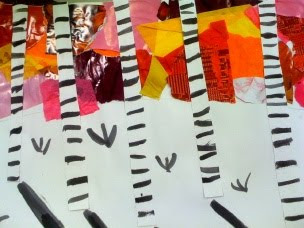

DISCUSSION: Warm and Cool Colors
Quickly touch on Color wheel primary and secondary color schemes
separate the color wheel to illustrate warm and cool colors
Pick a landscape piece from Monet with COOL COLORS
How do we feel when we look at the painting
How would it smell if we were there?
What would you touch?
Are we safe?
Pick a landscape piece from Monet with Warm Colors
Same ? as above
ARTIST: MONET (1840-1926)
French Painter
Studied art in Paris
Father of IMPRESSIONISM
Impressionists: attempted to capture a visual impression of a scene
Esp. with the natural light
Monet would paint the same scene over and over in different light of the day
For more on Claude Monet: http://en.wikipedia.org/wiki/Claude_Monet
LANDSCAPES:
Foreground
Background
Horizon line
Things in the foreground are bigger and more detailed
Things in the background are smaller and less detail
Perspective
PROJECT: two weeks: create a landscape using warm OR cool collage
Step1: Create a horizon line
Step2: Fill in the background with a warm OR cool multi media collage
Step3: Cut Out trees from white paper
Step4: paint birch black lines on each of your trees
Step5: Glue your trees on your paper overlapping your collage work
Step6: add tree shadows in greys
Step 7: Add details like grass in gray
MATERIALS:
Week1: Pencils
Glue
Collage materials of all sorts tissue, magazine, paper
scissors
Week2: scissors
Watercolors
White scrap paper for trees
Brushes
Water
Glue
This lesson plan was inspired by DEEPSPACESPARKLE.com: http://deepspacesparkle.blogspot.com/2009/03/multi-media-winter-birch-trees.html




























